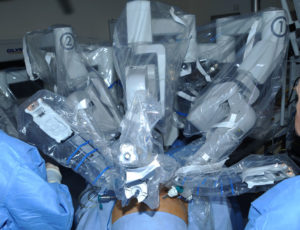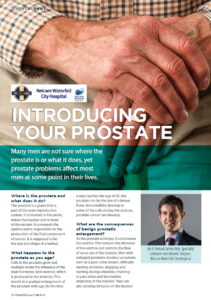Prostate cancer is one of the most common cancers affecting men worldwide. As medical technology advances, so do the options for treatment. One of the most revolutionary developments in prostate cancer surgery is the introduction of robot-assisted radical prostatectomy (RARP). This cutting-edge procedure has transformed the surgical landscape, offering patients a minimally invasive option with numerous benefits over traditional techniques.
What Is Robot-Assisted Radical Prostatectomy?
Robot-assisted radical prostatectomy is a surgical procedure designed to remove the prostate gland and surrounding tissues affected by cancer. The surgery is performed using a robotic system, most commonly the da Vinci Surgical System, which allows surgeons to operate with exceptional precision and control. The robotic system consists of a console where the surgeon sits, a patient-side cart with robotic arms, and high-definition 3D imaging technology.
Unlike traditional open surgery, where a large incision is made, RARP is performed laparoscopically. Small incisions are created, through which specialised surgical instruments and a camera are inserted. The robotic arms, controlled by the surgeon, mimic the movements of human hands but with greater dexterity and stability.
Benefits of RARP
Robot-assisted radical prostatectomy offers several advantages for patients and surgeons alike:
-
Minimally Invasive: The small incisions reduce trauma to the surrounding tissues, resulting in less pain and faster recovery.
-
Enhanced Precision: The robotic system provides magnified 3D views and eliminates hand tremors, allowing for precise dissection of the prostate and preservation of important structures such as nerves and blood vessels.
-
Reduced Blood Loss: The meticulous technique and controlled movements of the robotic arms minimise blood loss during surgery.
-
Shorter Hospital Stay: Patients typically spend less time in the hospital compared to those undergoing open surgery.
-
Improved Functional Outcomes: Preservation of the nerves responsible for urinary continence and erectile function is often better with RARP, improving post-operative quality of life.
Who Is a Candidate for RARP?
RARP is an option for men diagnosed with localised prostate cancer. Factors such as the patient’s overall health, cancer stage, and personal preferences play a role in determining suitability. It is crucial to discuss all available treatment options with a healthcare provider to make an informed decision.
The Surgical Journey
-
Preoperative Assessment: Patients undergo a thorough evaluation, including imaging studies, blood tests, and discussions about the procedure’s risks and benefits.
-
The Procedure: During RARP, the patient is under general anaesthesia. The surgeon operates the robotic system, carefully removing the prostate gland and, if necessary, surrounding lymph nodes.
-
Postoperative Care: Recovery from RARP is generally quicker than from open surgery. Patients are encouraged to walk within hours of the operation and can usually return home within 24-48 hours. Catheters, used temporarily to aid in urinary drainage, are typically removed after a week or two.
-
Follow-Up: Regular follow-up visits are essential to monitor recovery, assess PSA levels, and address any complications.
Outcomes and Considerations
Robot-assisted radical prostatectomy has shown excellent oncological and functional outcomes in numerous studies. However, as with any surgical procedure, there are risks, including infection, bleeding, and potential complications related to urinary or sexual function. Choosing an experienced surgeon significantly reduces these risks.
The Future of Prostate Cancer Surgery
Robot-assisted radical prostatectomy represents the pinnacle of modern surgical innovation. As robotic technology continues to advance, the precision and outcomes of such procedures are expected to improve further. For men diagnosed with prostate cancer, RARP provides a promising option that balances effective cancer treatment with the preservation of quality of life.
If you or a loved one is facing a prostate cancer diagnosis, consider discussing RARP with your healthcare provider. With the right information and expert guidance, you can make a choice that aligns with your needs and goals.
Disclaimer: This blog post is for informational purposes only and should not replace professional medical advice. Always consult with a qualified healthcare provider regarding your treatment options.




